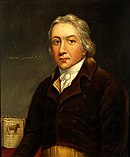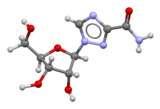The Viruses Portal
Welcome!

Viruses are small infectious agents that can replicate only inside the living cells of an organism. Viruses infect all forms of life, including animals, plants, fungi, bacteria and archaea. They are found in almost every ecosystem on Earth and are the most abundant type of biological entity, with millions of different types, although only about 6,000 viruses have been described in detail. Some viruses cause disease in humans, and others are responsible for economically important diseases of livestock and crops.
Virus particles (known as virions) consist of genetic material, which can be either DNA or RNA, wrapped in a protein coat called the capsid; some viruses also have an outer lipid envelope. The capsid can take simple helical or icosahedral forms, or more complex structures. The average virus is about 1/100 the size of the average bacterium, and most are too small to be seen directly with an optical microscope.
The origins of viruses are unclear: some may have evolved from plasmids, others from bacteria. Viruses are sometimes considered to be a life form, because they carry genetic material, reproduce and evolve through natural selection. However they lack key characteristics (such as cell structure) that are generally considered necessary to count as life. Because they possess some but not all such qualities, viruses have been described as "organisms at the edge of life".
Selected disease
Smallpox is an eradicated infectious disease of humans caused by the Variola major and V. minor viruses. V. major causes a serious disease with a mortality rate of around 30%; V. minor is associated with much milder symptoms and mortality below 1%. The virus is mainly transmitted by the respiratory route but can also be carried on contaminated objects. Smallpox preferentially infects skin cells, resulting in a usually maculopapular rash, and later, raised fluid-filled blisters. Most V. major survivors have permanent scarring, commonly on the face, which can be extensive. Less common long-term complications include blindness resulting from corneal ulceration and scarring, and in young children, limb deformities due to arthritis and osteomyelitis.
Smallpox probably emerged in human populations in about 10,000 BC; the mummified body of Egyptian pharaoh Ramses V shows evidence of smallpox rash. The disease was responsible for an estimated 300–500 million deaths during the 20th century. Smallpox vaccine, the earliest vaccine, was developed in the 18th century. After intensive vaccination campaigns, the last natural infection occurred in 1977. Smallpox was certified the first infectious disease to be eradicated globally in 1979. Debate is ongoing over whether all stocks of the virus should be destroyed.
Selected image
Many small icosahedral viruses have capsids made up of multiple copies of just two proteins. The proteins aggregate into units called capsomeres, which have either pentagonal or hexagonal symmetry (as shown here).
Credit: Antares42 (4 September 2009)
In the news
26 February: In the ongoing pandemic of severe acute respiratory syndrome coronavirus 2 (SARS-CoV-2), more than 110 million confirmed cases, including 2.5 million deaths, have been documented globally since the outbreak began in December 2019. WHO
18 February: Seven asymptomatic cases of avian influenza A subtype H5N8, the first documented H5N8 cases in humans, are reported in Astrakhan Oblast, Russia, after more than 100,0000 hens died on a poultry farm in December. WHO
14 February: Seven cases of Ebola virus disease are reported in Gouécké, south-east Guinea. WHO
7 February: A case of Ebola virus disease is detected in North Kivu Province of the Democratic Republic of the Congo. WHO
4 February: An outbreak of Rift Valley fever is ongoing in Kenya, with 32 human cases, including 11 deaths, since the outbreak started in November. WHO
21 November: The US Food and Drug Administration (FDA) gives emergency-use authorisation to casirivimab/imdevimab, a combination monoclonal antibody (mAb) therapy for non-hospitalised people twelve years and over with mild-to-moderate COVID-19, after granting emergency-use authorisation to the single mAb bamlanivimab earlier in the month. FDA 1, 2
18 November: The outbreak of Ebola virus disease in Équateur Province, Democratic Republic of the Congo, which started in June, has been declared over; a total of 130 cases were recorded, with 55 deaths. UN
Selected article
RNA interference is a type of gene silencing that forms an important part of the immune response against viruses and other foreign genetic material in plants and many other eukaryotes. A cell enzyme called Dicer (pictured) cleaves double-stranded RNA molecules found in the cell cytoplasm – such as the genome of an RNA virus or its replication intermediates – into short fragments termed small interfering RNAs (siRNAs). These are separated into single strands and integrated into a large multi-protein RNA-induced silencing complex, where they recognise their complementary messenger RNA (mRNA) molecules and target them for destruction. This prevents the mRNAs acting as a template for translation into proteins, and so inhibits, or silences, the expression of viral genes.
RNA interference allows the entire plant to respond to a virus after a localised encounter, as the siRNAs can transfer between cells via plasmodesmata. The protective effect can be transferred between plants by grafting. Many plant viruses have evolved elaborate mechanisms to suppress this response. RNA interference evolved early in eukaryotes, and the system is widespread. It is important in innate immunity towards viruses in some insects, but relatively little is known about its role in mammals. Research is ongoing into the application of RNA interference to antiviral treatments.
Selected outbreak
The 2001 foot-and-mouth outbreak included 2,000 cases of the disease in cattle and sheep across the UK. The source was a Northumberland farm where pigs had been fed infected meat that had not been adequately sterilised. The initial cases were reported in February. The disease was concentrated in western and northern England, southern Scotland and Wales, with Cumbria being the worst-affected area. A small outbreak occurred in the Netherlands, and there were a few cases elsewhere in Europe.
The UK outbreak was controlled by the beginning of October. Control measures included stopping livestock movement and slaughtering over 6 million cows and sheep. Public access to farmland and moorland was also restricted (pictured), greatly reducing tourism in affected areas, particularly in the Lake District. Vaccination was used in the Netherlands, but not in the UK due to concerns that vaccinated livestock could not be exported. The outbreak cost an estimated £8 billion in the UK.
Selected quotation
| “ | A virus is not an individual organism in the ordinary sense of the term, but something which could almost be called a stream of biological patterns. | ” |
Recommended articles
Viruses & Subviral agents: bat virome • elephant endotheliotropic herpesvirus • HIV • introduction to viruses![]() • Playa de Oro virus • poliovirus • prion • rotavirus
• Playa de Oro virus • poliovirus • prion • rotavirus![]() • virus
• virus![]()
Diseases: colony collapse disorder • common cold • croup • dengue fever![]() • gastroenteritis • Guillain–Barré syndrome • hepatitis B • hepatitis C • hepatitis E • herpes simplex • HIV/AIDS • influenza
• gastroenteritis • Guillain–Barré syndrome • hepatitis B • hepatitis C • hepatitis E • herpes simplex • HIV/AIDS • influenza![]() • meningitis
• meningitis![]() • myxomatosis • polio
• myxomatosis • polio![]() • pneumonia • shingles • smallpox
• pneumonia • shingles • smallpox
Epidemiology & Interventions: 2007 Bernard Matthews H5N1 outbreak • Coalition for Epidemic Preparedness Innovations • Disease X • 2009 flu pandemic • HIV/AIDS in Malawi • polio vaccine • Spanish flu • West African Ebola virus epidemic
Virus–Host interactions: antibody • host • immune system![]() • parasitism • RNA interference
• parasitism • RNA interference![]()
Methodology: metagenomics
Social & Media: And the Band Played On • Contagion • "Flu Season" • Frank's Cock![]() • Race Against Time: Searching for Hope in AIDS-Ravaged Africa
• Race Against Time: Searching for Hope in AIDS-Ravaged Africa![]() • social history of viruses
• social history of viruses![]() • "Steve Burdick" • "The Time Is Now" • "What Lies Below"
• "Steve Burdick" • "The Time Is Now" • "What Lies Below"
People: Brownie Mary • Macfarlane Burnet![]() • Bobbi Campbell • Aniru Conteh • people with hepatitis C
• Bobbi Campbell • Aniru Conteh • people with hepatitis C![]() • HIV-positive people
• HIV-positive people![]() • Bette Korber • Henrietta Lacks • Linda Laubenstein • Barbara McClintock
• Bette Korber • Henrietta Lacks • Linda Laubenstein • Barbara McClintock![]() • poliomyelitis survivors
• poliomyelitis survivors![]() • Joseph Sonnabend • Eli Todd • Ryan White
• Joseph Sonnabend • Eli Todd • Ryan White![]()
Selected virus
Canine parvovirus type 2 (CPV2) is a non-enveloped, single-stranded DNA virus in the Parvoviridae family. The icosahedral viral capsid is only 20–26 nm in diameter, making it one of the smallest viruses. The genome is about 5000 nucleotides long. The virus is very similar to feline panleukopenia virus, another parvovirus, as well as mink enteritis and raccoon and fox parvoviruses. It infects dogs, wolves, foxes and other canids, big cats and occasionally domestic cats, but cannot infect humans.
A relatively new disease, CPV2 infection was first recognised in 1978 and rapidly spread worldwide. The virus is stable and highly infectious, being transmitted by contact with faeces, infected soil or contaminated objects. After ingestion, the virus replicates in the lymphoid tissue in the throat, then spreads to the bloodstream to infect cells of the lymph nodes, intestinal crypts and bone marrow, damaging the intestinal lining. The more common intestinal form of disease causes vomiting and severe, often bloody diarrhoea. The cardiac form affects puppies under 8 weeks, causing respiratory or cardiovascular failure; mortality can reach 91% in untreated cases. No specific antiviral drug is available. Prevention is by vaccination.
Did you know?
- ...that George Hirst was the first person to discover a viral enzyme (pictured)?
- ...that fish diseases and parasites can result in mass fish die offs?
- ...that adjuvants are sometimes used to modify the effects that a vaccine has on disease resistance by stimulating the immune system to respond to the vaccine with much more vitality?
- ...that Australian ophthalmologist Sir Norman McAlister Gregg discovered the link between rubella and congenital disorders in newborn infants after overhearing several of his patients discussing their illness during pregnancy?
- ...that the very first news article on what became known as AIDS appeared in the New York Native, a now defunct gay newspaper in New York City?
Selected biography
Edward Jenner (1749–1823) was an English physician and scientist who pioneered the smallpox vaccine, the world's first vaccine. Noting the common observation that milkmaids were generally immune to smallpox, Jenner postulated that the pus in the blisters that milkmaids received from cowpox (a similar but much less virulent disease) protected them from smallpox. In 1796, Jenner tested his hypothesis by inoculating an eight-year-old boy with pus from an infected milkmaid. He subsequently repeatedly challenged the boy with variolous material, then the standard method of immunisation, without inducing disease. He published a paper including 23 cases in 1798. Although several others had previously inoculated subjects with cowpox, Jenner was the first to show that the procedure induced immunity to smallpox. He later successfully popularised cowpox vaccination.
Jenner is often called "the father of immunology", and his work is said to have saved more lives than that of any other individual.
In this month
6 October 2008: Nobel Prize in Physiology or Medicine awarded to Harald zur Hausen for showing that human papillomaviruses cause cervical cancer, and to Françoise Barré-Sinoussi and Luc Montagnier for discovering HIV
7 October 2005: 1918 Spanish influenza pandemic strain reconstituted
9 October 1991: Didanosine was the second drug approved for HIV/AIDS
12 October 1928: First use of an iron lung in a poliomyelitis patient
12 October 2007: Raltegravir (pictured) approved; first HIV integrase inhibitor
14 October 1977: Habiba Nur Ali was the last person to die from naturally occurring smallpox
14 October 2010: Rinderpest eradication efforts announced as stopping by the UN
16 October 1975: Last known case of naturally occurring Variola major smallpox reported
25 October 2012: Alipogene tiparvovec, a gene therapy for lipoprotein lipase deficiency using an adeno-associated virus-based vector, was the first gene therapy to be licensed
26 October 1977: Ali Maow Maalin developed smallpox rash; the last known case of naturally occurring Variola minor smallpox
26 October 1979: Smallpox eradication in the Horn of Africa formally declared by WHO, with informal declaration of global eradication
27 October 2015: Talimogene laherparepvec was the first oncolytic virus to be approved by the FDA to treat cancer
Selected intervention
Ribavirin is a nucleoside analogue that mimics the nucleoside guanosine. It shows some activity against a broad range of DNA and RNA viruses, but is less effective against dengue fever, yellow fever and other flaviviruses. The drug was first synthesised in the early 1970s by Joseph T. Witkowski and Roland K. Robins. Ribavirin's main current use is against hepatitis C, in combination with pegylated interferon, nucleotide analogues and protease inhibitors. It has been used in the past in an aerosol formulation against respiratory syncytial virus-related diseases in children. Ribavirin has been used in combination as part of an experimental treatment for rabies. It is also the only available treatment for the viruses causing some viral haemorrhagic fevers, including Lassa fever, Crimean–Congo haemorrhagic fever and hantavirus disease, but is ineffective against the filovirus diseases, Ebola and Marburg. Clinical use is limited by the drug building up in red blood cells to cause haemolytic anaemia.
Subcategories
Subcategories of virology:
Topics
Things to do
- Comment on what you like and dislike about this portal
- Join the Viruses WikiProject
- Tag articles on viruses and virology with the project banner by adding {{WikiProject Viruses}} to the talk page
- Assess unassessed articles against the project standards
- Create requested pages: red-linked viruses | red-linked virus genera
- Expand a virus stub into a full article, adding images, citations, references and taxoboxes, following the project guidelines
- Create a new article (or expand an old one 5-fold) and nominate it for the main page Did You Know? section
- Improve a B-class article and nominate it for Good Article
 or Featured Article
or Featured Article status
status - Suggest articles, pictures, interesting facts, events and news to be featured here on the portal
WikiProjects & Portals
 WikiProject Viruses
Related WikiProjects
WikiProject Viruses
Related WikiProjects
Medicine • Microbiology • Molecular & Cellular Biology • Veterinary Medicine
Related PortalsAssociated Wikimedia
The following Wikimedia Foundation sister projects provide more on this subject:
-
Commons
Free media repository -
Wikibooks
Free textbooks and manuals -
Wikidata
Free knowledge base -
Wikinews
Free-content news -
Wikiquote
Collection of quotations -
Wikisource
Free-content library -
Wikispecies
Directory of species -
Wikiversity
Free learning tools -
Wiktionary
Dictionary and thesaurus


















